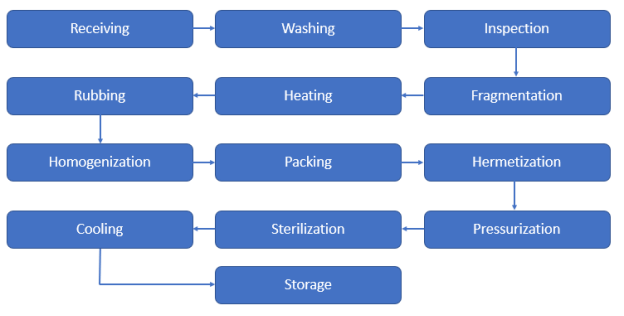Persimmons are becoming popular in markets across the world, however they are complex and varied than many consumers realize. The following article will look at several sides for making effective environment for keeping and exporting the product. Moreover, the stages of the experiment will be also discussed below.
Oriental persimmon, known as the subtropical or Japanese persimmon — Diospyros kaki L — is a deciduous tree up to 6–8 m, sometimes up to 12–15 m tall. Oriental persimmon is native to China. According to P. M. Zhukovsky and other authors, the eastern persimmon is a complex interspecific hybrid and appeared in China as a result of natural crossing of its wild species. There are many varieties of persimmon in China. For the experiment, we took 1 kg of persimmon (6 pcs.) of the Wiener variety, the Chocolate variety (Margilan), the Chocolate variety (Namangan) without damage or other flaws. Washed under running water and dipped in a double boiler for 6 minutes. Next, they removed the skin from the persimmon and passed the whole persimmon through a fine sieve. The sepals and pits were then separated. The resulting puree was passed through gauze in 8 layers. Then, after filtering the juice from the puree, it was heated, sterilized for 10–15 minutes and the puree was placed in jars, sealing and cooling them after. Fig 1.

Fig 1. Technological scheme for the production of persimmon puree
For drying, ripe fruits with a dense texture were selected. Light-fleshed persimmons were used, since dark, fleshy fruits produce dried fruits that are unattractive in appearance, ranging in color from dark brown to black. In dried fruits, the astringency of persimmon disappears, and fruits dried from astringent, but high-sugar varieties, have good taste.
Dried persimmon, depending on the variety, contains 51–70 percent sugars and 0.3–0.85 percent organic acids. Vitamin C is practically absent in dried persimmon.
The prepared persimmon was blanched for 15–20 seconds. Persimmons were placed on trays and dried in an oven at a temperature of 60 degrees. Drying time — 6–8 hours. Dried persimmons with 35 percent moisture can be stored for a long time, while with insufficient moisture, the fruit becomes tough and less tasty.
During the processing of fruits, various wastes are obtained: raw materials spoiled or substandard in shape and size, pomace, wipes, seeds, skins, seed chambers, etc. Wastes make up a significant part of the raw materials. For example, when obtaining juices during sorting and pressing, they make up 16...52 %. This waste can be reduced. Of great importance is the correct selection of fruit varieties for various types of processing. For example, fruits of apricots, cherries, peaches, plums and other stone fruits with a small stone give a greater yield of juice or puree compared to fruits with a large stone. When making compotes from whole fruits, this indicator is not significant.
|
Persimmon 1 kg |
||||
|
Pulp |
Peel |
Seeds (pcs) |
Waste |
|
|
1. |
0,830 gr |
0,040 gr |
10гр.(9 pcs) |
0,105 gr |
|
% |
0,985 gr (99 %) |
|||
Puree and juice yield:
|
№ |
Puree (gr) |
Juice (liter) |
|
1. |
0,385 |
0,410 |
|
2. |
0,180 |
0,350 |
|
3. |
0,160 |
0,300 |
Preparation of sugar syrup:
|
% |
|||
|
Substance |
20 |
30 |
40 |
|
Sugar |
80 gr |
120 gr |
160 gr |
|
water |
320 gr |
480 gr |
640 gr |
As a result of the experiments, based on the analysis of the results of experimental studies, persimmon juice was obtained with the addition of sugar syrup with a concentration of 20 %, 30 %, 40 %. Received persimmon puree — 385g., 180g., 160g. Received dried fruits from persimmon. Persimmon waste was analyzed: peel, seeds, sepals, the remaining pomace was dried. From dry pomace, sepals, we received: — pectin powder — 0.750 g; — polysaccharides — powder — 0.470g.
References:
- Flaumenbaum B. L. Technology of preservation of fruits and vegetables and quality control of products. M.: 1992.
- Ed. d. med. Sciences Nesterina M. F. and d. t.s. Skurikhina I. M. Chemical composition of food products. M., Food industry, 1979. -248s.
- Kulkov O. P. Subtropical fruit crops of Uzbekistan. Tashkent: Mekhnat, 1986, 174p.
- Sitnikov E. D. Workshop on technological equipment of canning factories. ed. 2nd. M.: Agropromizdat, 1989. — p. 122–123.







